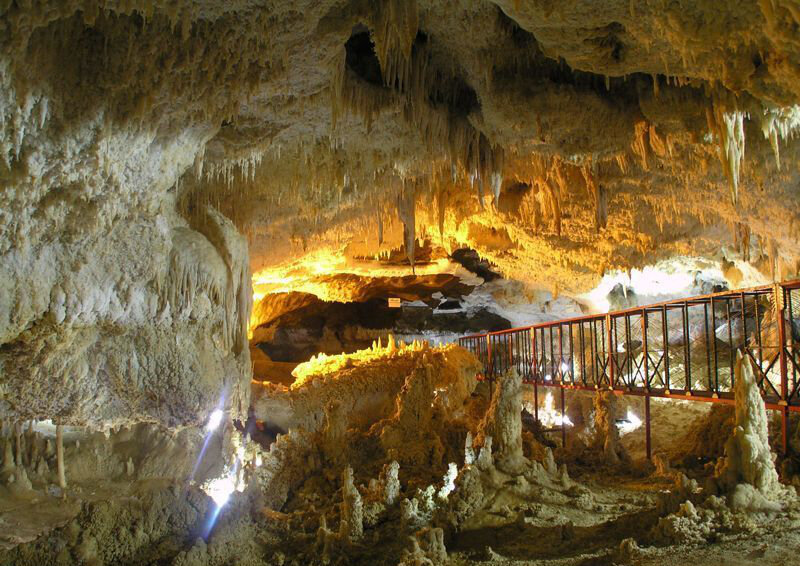A taste of Jurassic world: Iran’s Katale-Khor cave on agenda to be a tourism hub

TEHRAN – Katale-Khor, a limestone cave full of natural crystals believed to date from the Jurassic era, is planned to become one of the country’s tourism hubs, CHTN reported on Saturday.
Literally meaning “Mountain of Sun”, Katale-Khor is located in the northwestern Zanjan province and is said to date back to some 120 million years ago, so that it has embraced lots of natural and artificial changes during this lengthy period. The cave was reportedly discovered some seven decades ago by a group of Iranian cavers.
However, the distance between the cave and the surrounding cities and the lack of the tourism infrastructure are among the problems and weaknesses that have prevented the region from realizing its potential, provincial tourism chief Amir Arjmand said.
He also asked the private sector to collaborate in investing in the tourism industry of the province along with the government.
The cave interiors embrace huge hallways and corridors, which are impressively lit by flashlights.
Some three-seventh of the prolonged cave have been explored so far. A length of about 3km of the cave is open to the public while a 4km-route is accessible to experienced cavers and researchers.
Exploring a cave may not be on the “to-do list” of travelers in Iran. However, Karaftu, Ali-Sadr and Quri Qaleh, and Katale-Khor are amongst the most visited caves, the latter is situated some 150km south of Zanjan, off a road that connects Soltaniyeh to Hamedan.
Iran is geologically a part of the Alpine-Himalayan organic belt. According to Britannica Encyclopedia, the enigmatic evidence of human presence on the Iranian plateau is as early as Lower Paleolithic times.
The first well-documented evidence of human habitation is in deposits from several excavated cave and rock-shelter sites, located mainly in the Zagros Mountains of western Iran and dated to Middle Paleolithic or Mousterian times (c. 100,000 BC).
ABU/MG
